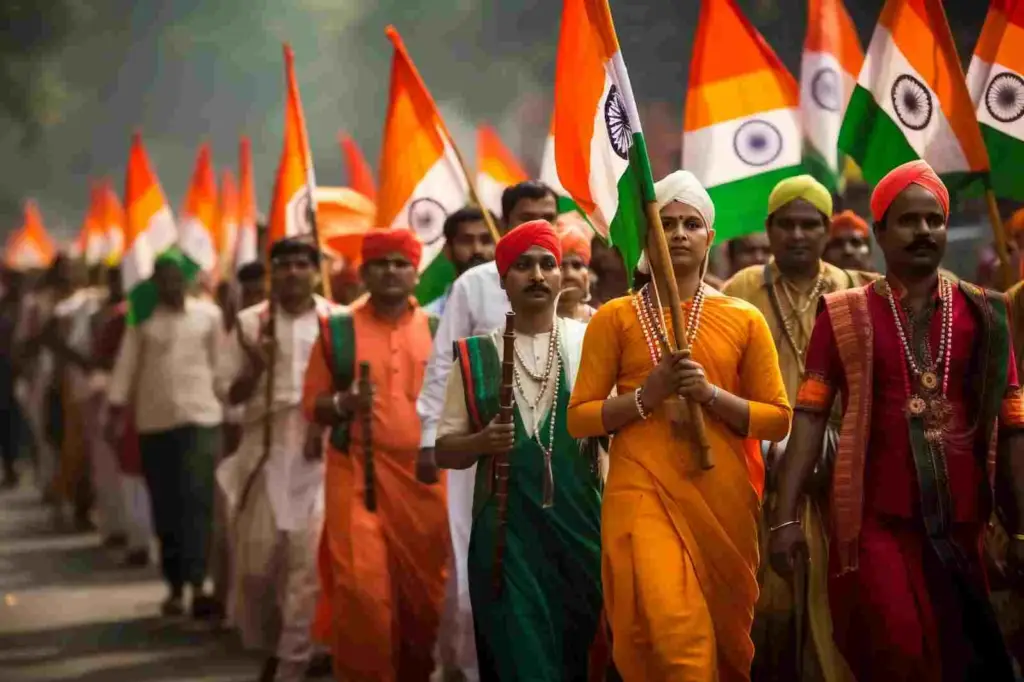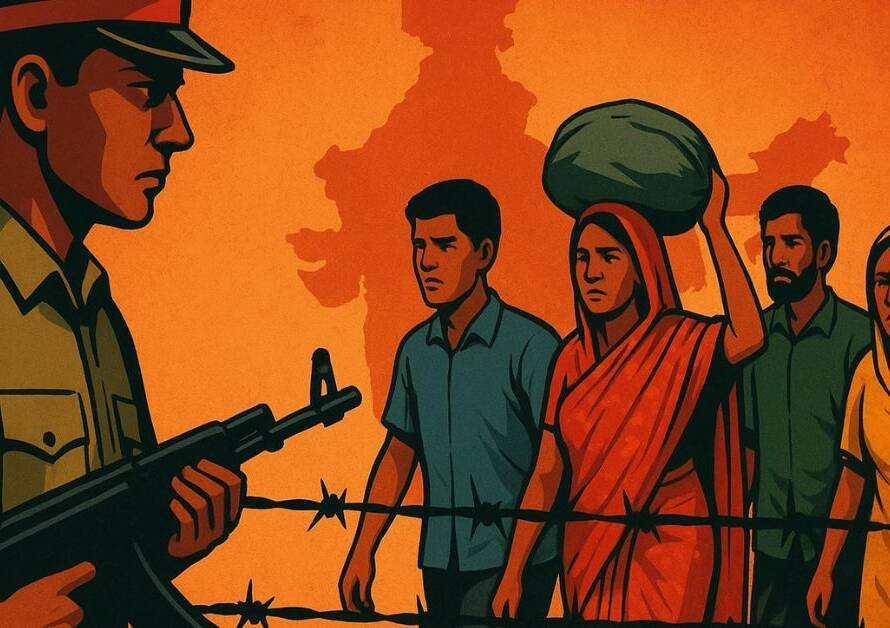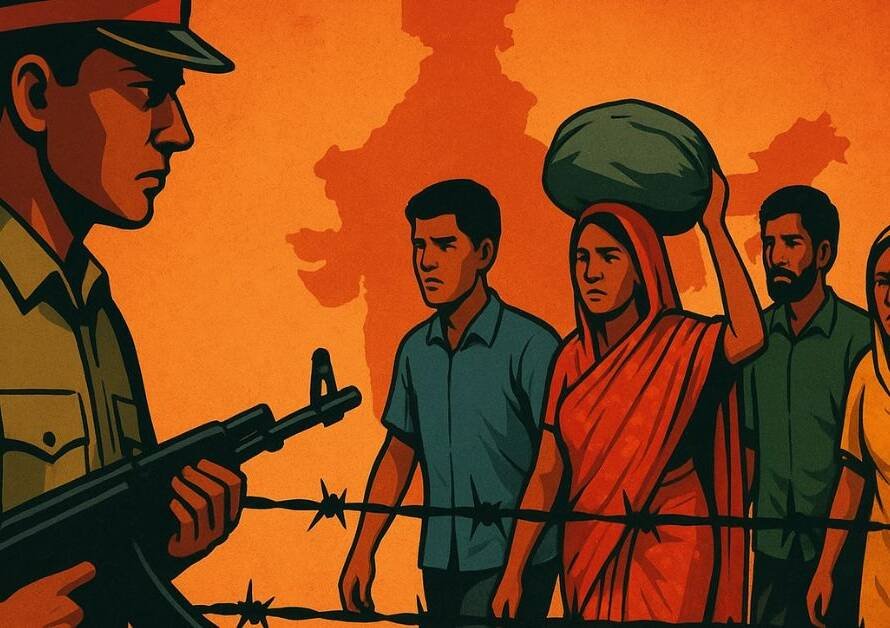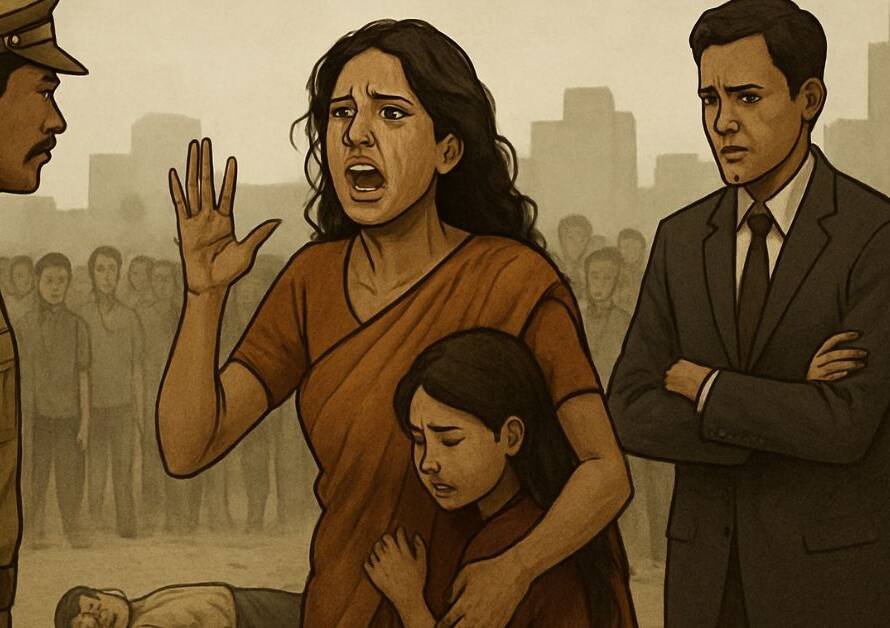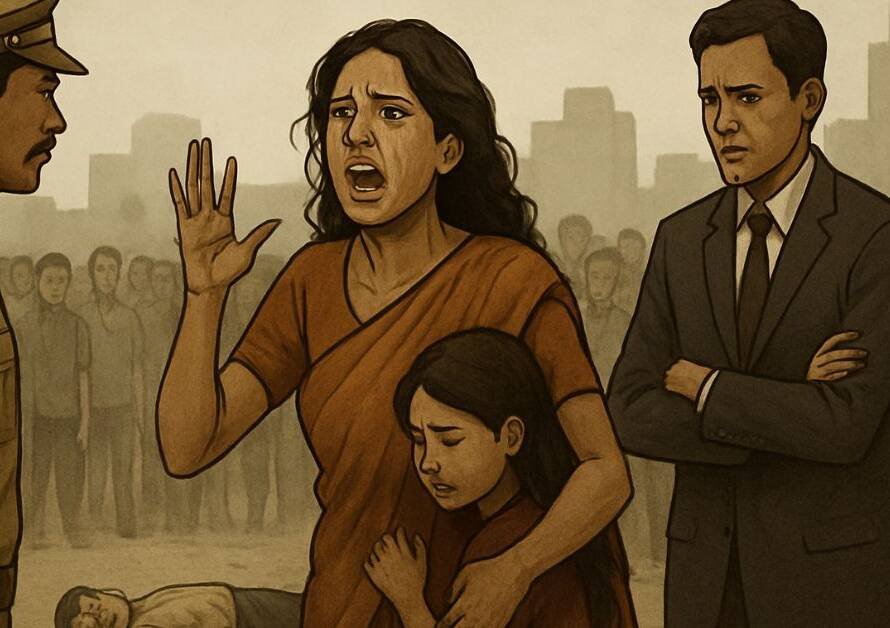You may recall Wing Commander Abhinandan, who was released from Pakistani captivity after the Modi government even considered deploying the ‘BrahMos missile.’ The pressure was so intense that it made the world, including the United States, sit up and take notice.
Now, read the names of some other pilots whose stories are far more tragic:
These Indian Air Force warriors were imprisoned during the 1971 war and never returned from Pakistani jails:
Wing Commander Harsaran Singh Dandoss
Squadron Leader Mohinder Jain
Squadron Leader J.M. Mistry
Squadron Leader J.D. Kumar
Flight Lieutenant Sudhir Goswami
Flight Lieutenant Nagaswami Shankar
Flight Lieutenant Ram M. Advani
…and many other brave warriors.
The Congress government never made efforts to trace them or put pressure on Pakistan. Indira Gandhi released 93,000 Pakistani prisoners of war as part of an agreement, but forgot to bring our own soldiers back. These heroes met anonymous deaths, and the nation was kept in the dark. Their stories were buried in the pages of history.
This is the bitter truth of the Nehru-Gandhi family’s lust for power and betrayal of the nation.
For those who ask, “Why such disdain for Congress and the Nehru-Gandhi family?” This post is an answer.
India needs to wake up! Yes, fuel prices are high—they will come down. Jobs will be created, homes will be built. But if India becomes like Afghanistan or Pakistan, then there will never be a Hindustan again.
Some serious questions:
Marriages conducted by priests and imams are valid, but why does a Hindu priest’s marriage need a court certificate to be recognized?
If love jihad criminals can be hanged in Israel, why not in India?
Where there are fewer Muslims, there is brotherhood; where there are more, Hindus are oppressed. Why?
Lessons from History: The respect that should have been given to Chhatrapati Shivaji, Maharana Pratap, and Guru Gobind Singh was instead given by Congress to Babur and Aurangzeb. The full credit for India’s independence was stolen by Nehru and Gandhi, while the real freedom fighters were forgotten. Our entire history has been distorted by anti-nationalists and invaders, dedicated to glorifying Muslims and anti-national elements. This distorted history has been taught in our country for the past 70 years.
Truth: India is the only country in the world where traitors face no action. Here, minorities oppress the majority.
Here, the human rights of terrorists are discussed, but there’s no voice for those killed by terrorism.
What answers do they have for this?
A humble appeal to all patriotic Hindus
It’s time to wake up! Abandon caste divisions and unite!
This is the time to organize. Only a united Hindu community can build a strong India.
Don’t just wake up, but wake others too! Support Modi Ji and all his associates with full strength. If we falter now, the opposition, invaders, and anti-national forces—who have been trying to lead us toward destruction since before India’s partition—will continue succeeding because of our foolishness. Their morale was sky-high after their success in the last Lok Sabha elections, and their anti-Hindu, anti-national activities increased manifold. However, after the results of elections in Haryana and Kashmir, their confidence has begun to crack, as we stood firmly with Modi Ji. If we continue to support them in unity across all elections, there is no doubt that we will succeed in saving our country and religion. Modi Ji has prepared extensively, and with our full cooperation, he will lead us swiftly toward our goal.
Final warning to Hindus:
This is the last generation that has the chance to fight for Hindutva. If we lose now, the next generation will only be fighting for survival. They may not even get that chance. Had the Modi government not come to power ten years ago, these opposition and invader forces would have already destroyed us, and this conversation wouldn’t even be happening. We would only be remembered in history for the foolishness of digging our own graves.
Final Message:
Swami Vivekananda gave this message to the citizens of this nation 120-150 years ago: “Shake off your bondage, rise, awaken, and unite. Keep striving tirelessly until your goal is achieved.”
With these words:
Jai Hind! Jai Bharat!
To illustrate the importance of Hindu unity and the various steps that can be taken, here are some relevant examples and case studies:
Reconstruction of Somnath Temple:
Case Study: The reconstruction of the Somnath Temple, led by Sardar Vallabhbhai Patel after India’s independence, is a significant example of Hindu unity and the restoration of cultural heritage. The temple had been repeatedly destroyed by Islamic invaders, and its reconstruction was seen as a symbol of national and religious pride.
Relevance: The Somnath Temple reconstruction is a historical case of Hindu society coming together to restore a religious symbol that was central to its identity. It demonstrated that even after centuries of oppression, the Hindu spirit could rise and reclaim its cultural spaces.
Conclusion:
These case studies and examples demonstrate that Hindu unity, when focused on religious, cultural, and national identity, can result in powerful movements for social change, protection of religious freedom, and political empowerment. By learning from these instances, Hindus today can focus on building stronger community bonds and confronting both internal divisions and external threats.
Steps for Hindu Unity
Ram Janmabhoomi Movement (Ayodhya):
Case Study: The Ram Janmabhoomi movement, which culminated in the construction of the Ram Temple in Ayodhya, is a significant example of Hindu unity. Despite facing strong opposition from various political parties, religious groups, and secular forces, millions of Hindus came together to support the cause. It became a symbol of reclaiming Hindu religious and cultural pride.
Relevance: This movement demonstrates how political and religious unity can lead to the successful preservation of cultural and religious heritage. It also highlighted the need for sustained effort and leadership in achieving religious goals.
Shivaji Maharaj’s Fight Against Mughal Empire:
Case Study: Chhatrapati Shivaji Maharaj, one of the greatest warriors in Indian history, successfully united various Hindu communities to resist the Mughal rule, which was often oppressive toward Hindus. Shivaji emphasized Hindu unity and created a powerful kingdom that not only protected but also promoted Hindu culture.
Relevance: Shivaji Maharaj’s leadership and emphasis on Hindu unity is a historical example of how internal unity can protect the religion from external threats. His approach also combined political strategy with cultural revival.
The Role of RSS in Hindu Mobilization:
Case Study: The Rashtriya Swayamsevak Sangh (RSS), founded in 1925, is one of the most significant examples of an organization dedicated to promoting Hindu unity. Over the years, the RSS has worked to unite various castes, sects, and regional groups within Hinduism, promoting a sense of cultural and national pride. The organization played a key role in mobilizing people during the Ram Janmabhoomi movement and continues to work on social, educational, and cultural initiatives aimed at strengthening Hindu society.
Relevance: The RSS model shows how a grassroots organization can effectively unite people for religious and national causes. Its extensive network and disciplined approach have been instrumental in mobilizing Hindus for various social and political issues.
Love Jihad Laws in Uttar Pradesh:
Case Study: Uttar Pradesh has passed laws aimed at curbing forced religious conversions, particularly those related to “love jihad.” These laws, officially known as the “Uttar Pradesh Prohibition of Unlawful Conversion of Religion Ordinance, 2020,” have been designed to prevent fraudulent marriages and conversions, especially targeting Hindu women.
Relevance: This is an example of how state intervention can protect Hindu society from external threats like forced conversions. The law empowers the Hindu community to protect their cultural and religious identity while sending a strong message to adversarial forces.
Sikh-Hindu Unity during the Mughal Rule:
Case Study: During the oppressive Mughal rule, particularly under Emperor Aurangzeb, Hindus and Sikhs united against forced conversions and atrocities. Guru Gobind Singh and earlier Guru Tegh Bahadur made immense sacrifices to protect Hindu dharma. Guru Tegh Bahadur, the ninth Sikh Guru, gave his life to protect the religious freedom of Kashmiri Hindus who were being forcibly converted to Islam by Mughal rulers.
Relevance: The solidarity between Hindus and Sikhs during these times of crisis is a historical reminder of how different sects within the broader Dharmic tradition can unite against external threats. This also underscores the importance of inter-community cooperation for religious protection.
Karsevaks at the Babri Masjid Demolition:
Case Study: In 1992, thousands of Karsevaks (Hindu volunteers) gathered in Ayodhya to demand the rebuilding of the Ram Temple at the site where the Babri Masjid stood. While the event resulted in the controversial demolition of the mosque, it also became a symbol of Hindu mobilization and unity, with millions of Hindus standing together for the cause.
Relevance: This movement is a modern-day example of Hindu unity transcending caste and regional differences. Despite political and legal challenges, the collective effort led to the eventual construction of the Ram Temple.
Hindu Cultural Revitalization in Tamil Nadu:
Case Study: In Tamil Nadu, where Dravidian politics has historically been critical of Hindu religious practices, there has been a recent resurgence of Hindu cultural and religious activities, largely driven by groups like the Hindu Munnani. These organizations are working to counter the narrative that Tamil culture is separate from Hinduism and have succeeded in uniting people to celebrate Hindu festivals like Ganesh Chaturthi and Ayudha Puja with great zeal.
Relevance: This is a modern example of how Hindus can unite and reclaim their religious and cultural space even in regions where political narratives are adverse. Through organized efforts, these movements have seen success in cultural reawakening.
Cow Protection Movements:
Case Study: Across India, especially in the northern states, movements for cow protection have historically been a rallying point for Hindu unity. In states like Gujarat, Rajasthan, and Uttar Pradesh, organizations dedicated to cow protection have mobilized large sections of the Hindu population, leading to the implementation of stricter laws against cow slaughter.
Relevance: The cow protection movements serve as an example of how religious and cultural symbols can be used to unite people across castes and regions. These movements have also led to political influence, with parties adopting cow protection as a key part of their manifesto.
Hindu unity is essential not only for the protection and growth of Hinduism but also for strengthening India’s cultural and national identity. To unite the Hindu society, the following steps are necessary:
- End Caste Discrimination and Divisions:
Social Harmony: Eliminating caste-based discrimination is the most important step. Caste-based discrimination has divided the Hindu society for centuries, benefiting external forces. We need to return to our ancient ideals and adopt the principle of “Sarve Bhavantu Sukhinah” (May all be happy).
Resolve Internal Conflicts: The first step towards unity is to resolve internal disputes, whether they are based on caste, region, or economic inequality. - Increase Awareness of Religion and Culture:
Religious Education: It is essential to introduce the youth to Indian culture, traditions, and the greatness of Hinduism. Strengthening religious institutions and spreading the principles of Sanatan Dharma through religious teachings is vital.
Promotion of Sanskrit: Sanskrit is the root language of Hinduism, and many religious texts have been created in it. Promoting Sanskrit can help revive our cultural heritage.
Significance of Hindu Festivals: Celebrate Hindu festivals as symbols of unity, strengthening the bonds between different classes and communities. - Institutional Efforts for the Protection and Promotion of Hinduism:
Organizations for Dharma Protection: Organizations should be formed that work to protect Hinduism and its followers. These organizations should fight against issues like love jihad, forced conversions, and anti-Hindu activities.
Restoration of Religious Institutions: Focus should be placed on the preservation and restoration of temples and religious sites. Religious centers like Ayodhya, Kashi, and Mathura should be re-established as focal points. - Political Unity and Support:
Political Participation: Hindus should organize politically and support leaders committed to protecting their religious, cultural, and social interests.
Oppose Adversarial Forces: It is essential to collectively stand against political and social forces that try to weaken Hindu society. - Educational and Economic Empowerment:
Reforming Education: High-quality education should be provided to all classes of Hindu society, and India’s glorious history and Hinduism’s great contributions should be taught, instilling pride in the younger generation.
Economic Empowerment: Plans should be made to economically empower weaker sections of Hindu society, making them financially strong and self-reliant. Steps like job creation, promotion of small industries, and financial assistance should be taken. - Strict Laws Against Forced Conversions and Love Jihad:
Anti-Conversion Laws: Strict laws should be made and enforced against forced conversions. Forced conversions divide Hindu society and increase social fragmentation.
Action Against Love Jihad: Effective laws and awareness campaigns should be run to prevent planned conspiracies like love jihad. - Effective Use of Media and Social Media:
Positive Promotion: Use media and social media to spread the greatness, traditions, and values of Hinduism. This will increase positivity and unite the Hindu society.
Expose Adversarial Forces: Organized media efforts should be made to expose the false propaganda of forces that try to defame Hinduism and society. - Connecting Religion and Nationalism:
Nationalist Perspective: Emphasis should be placed on linking Hinduism and Indian nationalism so that every member of Hindu society understands their responsibility toward the nation and religion.
National Security and Religious Protection: Hindu society should be made aware of national security issues and be made to understand that only a secure nation can protect religion and culture. - Organizing the Youth:
Utilizing Youth Power: It is essential to organize Hindu youth and inspire them to serve religion, the nation, and society. Training and guidance programs should be initiated for the youth so they can understand social responsibilities and take leadership roles. - Dialogue and Coordination Within Hindu Society:
Exchange of Ideas: Dialogue is necessary to eliminate various ideologies and differences within the Hindu society. A united platform should be created to increase coordination between different sects, organizations, and groups.
Message of Unity: All religious and social organizations should come together to spread the message of Hindu unity, increasing the spirit of organization within society.
Conclusion:
To unite Hindu society, it is essential to eliminate caste divisions, increase religious and cultural awareness, ensure educational and economic empowerment, and provide political support. If the Hindu society organizes and shows unity in protecting its religion and culture, it will not only strengthen Hinduism but also solidify India’s cultural and national identity.Steps for Hindu Unity
Hindu unity is essential not only for the protection and growth of Hinduism but also for strengthening India’s cultural and national identity. To unite the Hindu society, the following steps are necessary:
Dialogue and Coordination Within Hindu Society:
Exchange of Ideas: Dialogue is necessary to eliminate various ideologies and differences within the Hindu society. A united platform should be created to increase coordination between different sects, organizations, and groups.
Message of Unity: All religious and social organizations should come together to spread the message of Hindu unity, increasing the spirit of organization within society.
Conclusion:
To unite Hindu society, it is essential to eliminate caste divisions, increase religious and cultural awareness, ensure educational and economic empowerment, and provide political support. If the Hindu society organizes and shows unity in protecting its religion and culture, it will not only strengthen Hinduism but also solidify India’s cultural and national identity.
End Caste Discrimination and Divisions:
Social Harmony: Eliminating caste-based discrimination is the most important step. Caste-based discrimination has divided the Hindu society for centuries, benefiting external forces. We need to return to our ancient ideals and adopt the principle of “Sarve Bhavantu Sukhinah” (May all be happy).
Resolve Internal Conflicts: The first step towards unity is to resolve internal disputes, whether they are based on caste, region, or economic inequality.
Increase Awareness of Religion and Culture:
Religious Education: It is essential to introduce the youth to Indian culture, traditions, and the greatness of Hinduism. Strengthening religious institutions and spreading the principles of Sanatan Dharma through religious teachings is vital.
Promotion of Sanskrit: Sanskrit is the root language of Hinduism, and many religious texts have been created in it. Promoting Sanskrit can help revive our cultural heritage.
Significance of Hindu Festivals: Celebrate Hindu festivals as symbols of unity, strengthening the bonds between different classes and communities.
Institutional Efforts for the Protection and Promotion of Hinduism:
Organizations for Dharma Protection: Organizations should be formed that work to protect Hinduism and its followers. These organizations should fight against issues like love jihad, forced conversions, and anti-Hindu activities.
Restoration of Religious Institutions: Focus should be placed on the preservation and restoration of temples and religious sites. Religious centers like Ayodhya, Kashi, and Mathura should be re-established as focal points.
Political Unity and Support:
Political Participation: Hindus should organize politically and support leaders committed to protecting their religious, cultural, and social interests.
Oppose Adversarial Forces: It is essential to collectively stand against political and social forces that try to weaken Hindu society.
Educational and Economic Empowerment:
Reforming Education: High-quality education should be provided to all classes of Hindu society, and India’s glorious history and Hinduism’s great contributions should be taught, instilling pride in the younger generation.
Economic Empowerment: Plans should be made to economically empower weaker sections of Hindu society, making them financially strong and self-reliant. Steps like job creation, promotion of small industries, and financial assistance should be taken.
Strict Laws Against Forced Conversions and Love Jihad:
Anti-Conversion Laws: Strict laws should be made and enforced against forced conversions. Forced conversions divide Hindu society and increase social fragmentation.
Action Against Love Jihad: Effective laws and awareness campaigns should be run to prevent planned conspiracies like love jihad.
Effective Use of Media and Social Media:
Positive Promotion: Use media and social media to spread the greatness, traditions, and values of Hinduism. This will increase positivity and unite the Hindu society.
Expose Adversarial Forces: Organized media efforts should be made to expose the false propaganda of forces that try to defame Hinduism and society.
Connecting Religion and Nationalism:
Nationalist Perspective: Emphasis should be placed on linking Hinduism and Indian nationalism so that every member of Hindu society understands their responsibility toward the nation and religion.
National Security and Religious Protection: Hindu society should be made aware of national security issues and be made to understand that only a secure nation can protect religion and culture.
Organizing the Youth:
Utilizing Youth Power: It is essential to organize Hindu youth and inspire them to serve religion, the nation, and society. Training and guidance programs should be initiated for the youth so they can understand social responsibilities and take leadership roles.

